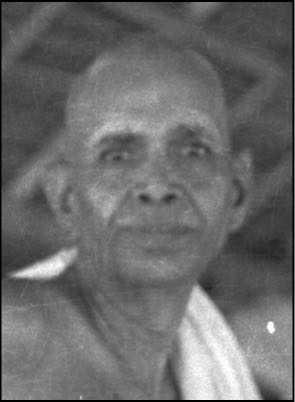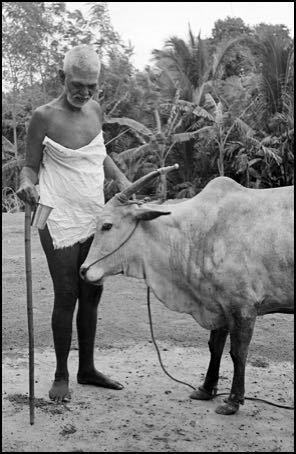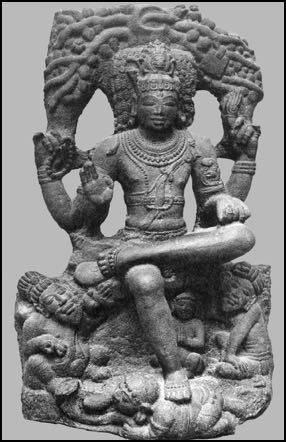



Spiritual-Teaching.org
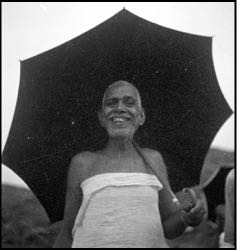
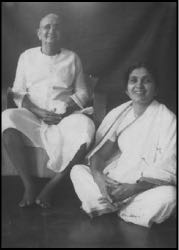
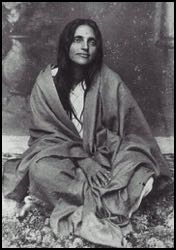
Letter # 8 - Initiation
Initiation is a tricky subject. In say, Tibetan Buddhism, there can be elaborate rituals connected with initiation. In Hinduism, depending on the sect or sampradaya (lineage) there may be a formal ceremony. An initiation can happen in a moment with a simple formality of sitting before the guru who initiates one into a mantra by softly speaking it into one’s ear. There are also eccentric actions of an unpredictable siddha (a man of power who does not follow orthodox tradition) who slaps the initiate across the back or raps them on the head. The variety of ‘transactions’ is too numerous to count for there are always, like life, exceptions to the rule.
In the case of Sri Ramana, he was known to guide a suitable devotee by a simple, Tamil word such as ‘summa iru’ (just be) or ‘Siva Siva’. More often, he gave initiation by unspoken look. A young girl who was only 9 years old, saw Bhagavan alive in the Old Hall and recounted that one day he unexpectedly looked at her for a long moment in such a distinct way that the memory remained indelibly imprinted on her mind.
She thought at the time, “So, that is what they all are talking about.” The extraordinary thing was that when Bhagavan gave initiation to one person sitting amidst a crowd of people…no one else was aware of what had happened. As I have said before, everything he did was unpretentious and intensely personal.
But most often it was in silence that the initiate received the appropriate blessing that transported their consciousness beyond its narrow boundary. In other words, the initiation broke down the barriers we consciously or otherwise set up around our habitual sense of self that inhibits our understanding of higher truths. Sri Ramana’s signature initiation was the expression ‘Na Yar?’ (Who Am I?). This is not a simple rhetorical statement but a powerful thrust into the underworld of our swirling pool of thoughts and emotions which dictate generally unbeknownst to us, how we act and react to situations. People in general are like rockets that go off according to a specific trip word or circumstance. The more tension a person has, the quicker the flare-up.
People are victims of their ignorance as to who they truly are. Initiation aims to provide the initiate with a tool that helps them build up a steady stream of consciousness that is unmoved by the fluctuations of thoughts and emotions which constantly assail us. We can well say with Napoleon Bonaparte that “The battlefield is a scene of constant chaos. The winner will be the one who controls that chaos, both his own and the enemies.” For life, as we well know from the Bhagavad Gita, is a battlefield. The guru through initiation gives us the means to control our destiny. It is as significant as that.
My initiation happened one morning quite modestly as I was walking up the laneway adjacent to the Morvi Guest House compound which is owned by the ashram. It was about six weeks after my arrival. I was on my way to the Old Hall when suddenly, this unseen voice in a quiet, commanding tone took me through the process of asking the question ‘Who Am I?’ It was all over within say thirty seconds. A seed had been implanted in my consciousness and all I had to do was to cultivate it with my attention. It was very clear. There were no doubts as to what happened. From that moment on my mind had an instrument that could pull thoughts back to their source. It eventually became so much of a routine that it works spontaneously to a greater or lesser degree depending on how identified I am with a thought. Deep-rooted thoughts take much longer to dislodge but eventually, they do succumb to persistence and just as important, faith in the practice.
One should remember that if a person is sincere and diligent in their practice, initiation will surely come. It may not be in the form that one expects, but come it does. Sri Ramana is so low-key that it is not surprising that some who did receive the initiation did not realise that it happened until perhaps much later. Sri Ramana unblocks the gateway to effective self-attention, atma vichara.
It bears repeating from an earlier Letter about the practice of Who am I? Nan Yar? or Who Am I? asks that direct, intimate question: Who am I? There is no answer to the question as such, though one may elaborate a series of depictions as to who one thinks one is, in terms of sex, height, skin colour, hair colour, qualifications, names of parents…..the list is ultimately endless. It doesn’t matter how thorough you are, you can never fully satisfy any portrayal of yourself. For in the end, what do you have? A humungous list but you know that none of that inventory can present the essence of your being, which is elusive and invisible like the wind.
The myth of the creation of the sacred hill Arunachala can be linked to this conundrum which we all face as to who we are. It is said that Brahma the Creator and Vishnu the Preserver argued that each of them was greater than the other. Brahma claimed he was the architect of the universe while Vishnu stated that the world could not exist if Brahma had not been created within a lotus that bloomed from the navel of Vishnu. They could not resolve their differences. Lord Siva then arrived on the scene and declared that he was greater than either one of them.
Naturally, the other two violently disagreed. Lord Siva then said that he would manifest as a pillar of light and if either one of them could find the top or the bottom that god who was successful was greater than him.
Both Brahma and Vishnu accepted the challenge. Brahma took the form of a bird and flew ever upward in search of the summit while Vishnu turned into a boar and started to dig ever further down in search of the bottom. Brahma was unable to locate the top and gave up but instead of admitting defeat, he concocted a plan to show he reached the top. He caught a flower that had fallen from the head of the Siva linga and brought it back to where Lord Siva was and declared that he found the top and the ketaki flower was proof. Lord Siva laughed and said he was a liar. Meanwhile, Vishnu went as far as he could but still could not locate the bottom. He returned to the surface humbled and admitted defeat. Lord Siva graciously accepted his surrender and asserted that because of his truthfulness, Vishnu would be worshipped in temples, but Brahma because he lied would not be worshiped. This is the case in India today except for a few minor temples where Brahma is the central deity.
One of the interpretations of this well-known myth is that it does not matter how far you voyage in external space you can never reach the edge of the universe and no matter how deeply you analyse an object, you will never find a core beyond which there is nothing. The one abiding factor in all this is consciousness which is present throughout all space and all time. It is physically represented by Lord Siva as an endless pillar of light. Pure consciousness has no beginning and no end.
Further, for the sake of those who worshipped Lord Siva but could not bear the fiery light, Lord Siva turned into a hill of stone that we now know as Arunachala. Sri Ramana declared that Arunachala was his guru and that we who follow in his footsteps are indeed fortunate that the mountain, as a divine presence, is ever available to guide and nurture us even when the physical form of Sri Ramana is no longer available.
With the process of self-enquiry, when the question is asked, ‘Who am I?, the attention is directed towards who is asking the question and it remains secure in that space of consciousness, this is in esoteric terms the realm of Lord Siva. In Sanskrit, Siva means auspicious. Arunachala is a physical manifestation of this auspiciousness.
We can easily bask in the presence of this phenomenon but it is our responsibility to bring the mind and its endless thoughts back to its point of origin. It does not mean analysing a situation to death like Vishnu. It does not mean dreaming of all kinds of impossible solutions to encapsulate infinity like Brahma. It means remaining ever vigilant as thoughts arise. The emphasis is on being, or what in Vedanta is identified as sat.
It is a subtle process but once a practitioner applies their attention to the process often enough it gradually becomes easier and easier, until it can be an automatic procedure when unwanted thoughts arise. It does not mean that you become a zombie but quite the contrary, the powers of discrimination and detachment are developed and the sense of serenity flourishes. The investigation into our being brings with it an unexpected joy.
